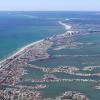Now I want a twin...
-
Members Online
- RichB
- exM20K
- bigmo
- Hank
- N201MKTurbo
- Rick Junkin
- eman1200
- EricJ
- ohdub
- Utah20Gflyer
- mgtrevor
- FoxMike
- rbmaze
- Sabremech
- Jim Peace
- Grant_Waite
- ElkoRandy20J
- richardbrochu27
- M20C69
- 802flyer
- Red Leader
- KLRDMD
- Danb
- FlyingScot
- Parker_Woodruff
- PT20J
- Schllc
- Paul Thomas
- TNIndy
- ProtoFly
- Fabio Delgado
- M20S Driver
- MDMooney
- lanejacobs84
- Larry
- 1967 427
- Planter


Recommended Posts
Join the conversation
You can post now and register later. If you have an account, sign in now to post with your account.